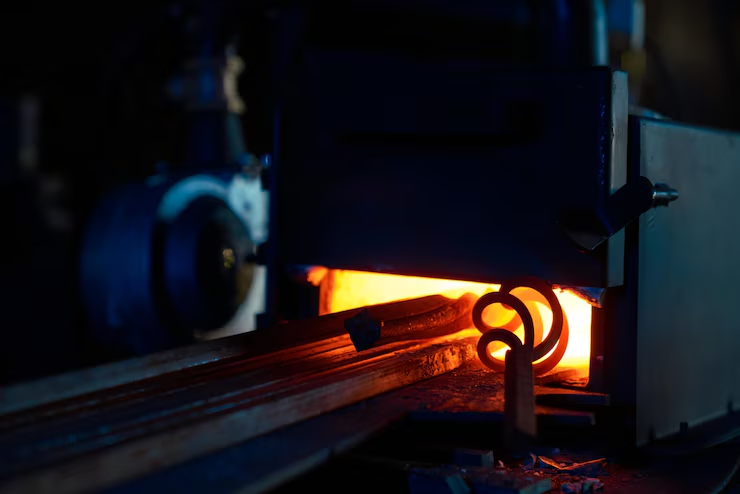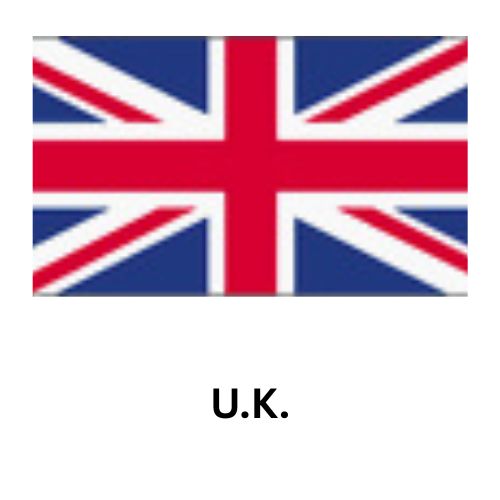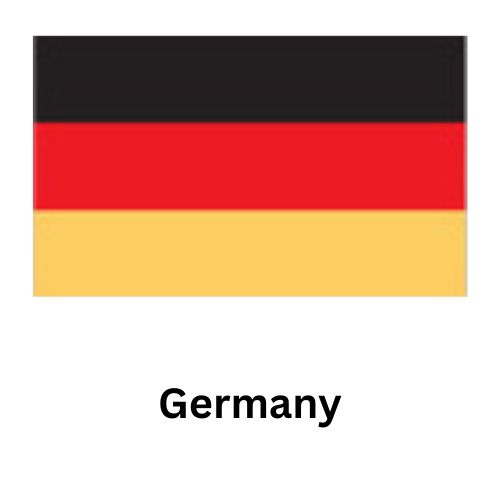Material Melting
At Dsquare Engineering, the material melting process is a crucial phase in our bronze casting operations. We follow a meticulous approach to ensure alloy quality and consistency:
- Raw Material Selection: We use high-grade bronze, primarily composed of copper and tin, with optional additions like aluminum, nickel, or zinc based on the specific alloy requirements.
- Quality Sorting: All raw materials undergo thorough inspection and sorting to meet our stringent quality standards.
- Pre-Melting Cleaning: To prevent contamination, materials are cleaned to remove surface impurities, oils, and debris before melting begins.

A title
Image Box text
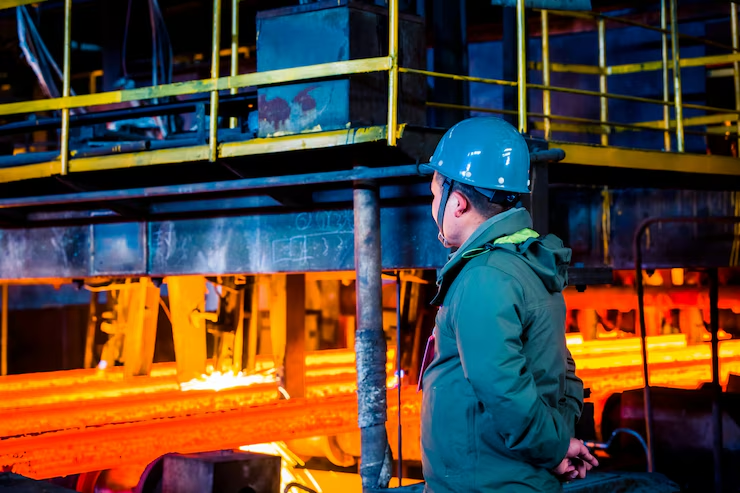
A title
Image Box text
Continuous casting
A Modern Approach to Bronze Casting
At Dsquare Engineering, we utilize continuous casting, a state-of-the-art process revolutionizing the metal industry—especially for bronze production. This advanced technique offers significant benefits over traditional casting methods, ensuring superior quality and efficiency.
Continuous Casting Process
Molten bronze is poured into a water-cooled mold. As it solidifies, the material is gradually drawn out using rollers, forming a continuous stream in the desired shape such as rods, bars, or tubes.
Key Advantages
- Enhanced Quality: Controlled solidification results in uniform microstructure and excellent mechanical strength.
- Reduced Waste: Optimized usage and minimal defects lower material waste significantly.
- Versatility: Ideal for producing a wide range of bronze alloys and custom profiles.
Material Pouring
A Crucial Step in Casting: Molten Metal Pouring
At Dsquare Engineering, the process of pouring molten non-ferrous metals into molds is a vital step that greatly influences the quality and structural integrity of the final product.
Key Considerations in Pouring Non-Ferrous Metals:
- Metal Temperature Management:
Each non-ferrous alloy has an ideal pouring temperature range. Pouring below this range may result in incomplete mold filling, while overheating can lead to oxidation, gas entrapment, and dimensional distortion. - Consistent Temperature Control:
Ensuring a stable temperature during pouring is critical. We utilize precise sensors and controlled heating systems to maintain uniformity and prevent casting defects.

A title
Image Box text
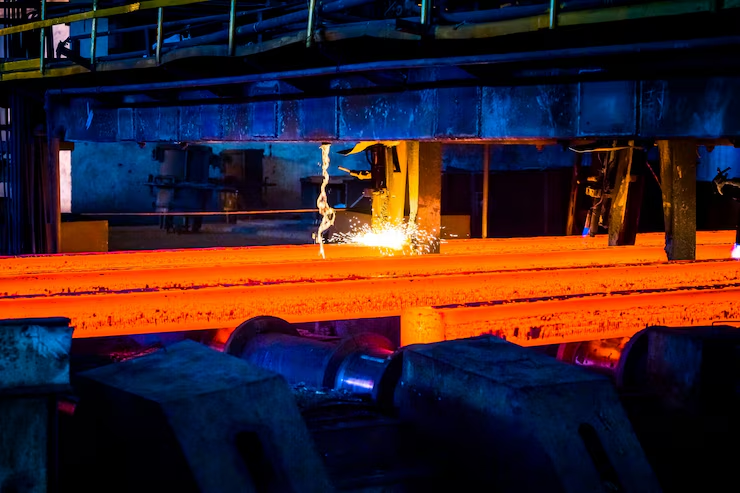
A title
Image Box text
Centrifugal Casting
Precision Non-Ferrous Centrifugal Casting at Dsquare Engineering
Centrifugal casting is a high-precision process used at Dsquare Engineering to produce dense, reliable, and mechanically superior non-ferrous metal components. In this technique, molten metal is poured into a rapidly rotating mold, using centrifugal force to ensure uniform distribution and exceptional casting quality.
Process Overview:
- Mold Preparation:
A precisely shaped mold, typically metal or ceramic, is prepared to match the required geometry of the casting. - Metal Melting:
Selected non-ferrous alloys—such as aluminum, copper, or bronze—are melted in a furnace to optimal casting temperatures. - Pouring:
The molten metal is introduced into the spinning mold, utilizing centrifugal force for even distribution. - Solidification:
The metal is forced against the mold walls and solidifies uniformly, resulting in a dense and defect-free structure. - Cooling and Extraction:
After solidification, the mold is cooled and the finished casting is carefully extracted.
Sand cast Parts
Bronze Sand Casting: A Proven Traditional Craft
At Dsquare Engineering, bronze sand casting remains a reliable and adaptable method for producing complex, high-quality bronze components. This time-tested technique involves creating a mold using specialized sand and pouring molten bronze to form durable, intricately shaped parts. It is ideal for both small batches and large-scale production, offering design flexibility while maintaining structural integrity.
The Process Explained
The casting process begins with the creation of a precise pattern made from wood or metal, shaped exactly like the final product. This pattern is placed into a flask and surrounded by sand mixed with a binding agent to maintain its form. Once the pattern is removed, a mold cavity is left behind. Molten bronze is then poured into the cavity via a sprue channel. As the metal cools and solidifies, it takes the desired shape. Finally, the sand mold is broken apart to extract the finished casting, ready for further finishing or machining.

A title
Image Box text

A title
Image Box text
Aluminium pressure die cast parts
A Reliable and Efficient Manufacturing Solution
At Dsquare Engineering, aluminum pressure die casting is employed as a robust and efficient technique to produce high-quality metal components with intricate geometries. This method involves injecting molten aluminum into precision-engineered steel molds under high pressure, resulting in parts with exceptional accuracy and surface finish.
Key Advantages of Aluminum Pressure Die Cast Parts:
- High Strength-to-Weight Ratio: Aluminum’s lightweight nature combined with impressive strength makes it ideal for applications in automotive, aerospace, and industrial sectors where reducing weight without compromising performance is critical.
- Complex Designs: This technique allows for the creation of complex parts with detailed features, undercuts, and thin walls that are challenging to replicate with traditional casting methods.
- High Productivity: Automation in the pressure die casting process supports high-speed, large-volume production, ensuring timely delivery without sacrificing quality.
- Cost-Efficiency: Especially in high-volume production scenarios, this process proves economical by minimizing material waste and reducing labor costs.
Material Chemical Analysis
At Dsqure Engineering, material chemical analysis is a cornerstone of our quality assurance and innovation processes. We specialize in accurately determining the chemical composition of materials to support a wide range of industries, including manufacturing, pharmaceuticals, environmental monitoring, and advanced research.
Our Objectives in Chemical Analysis:
- Validate Material Composition
We ensure that all materials conform to required specifications and industry standards, providing our clients with reliable and consistent results. - Enhance Quality Control
By monitoring material consistency and purity throughout the production process, we help maintain high-quality outputs and reduce the risk of defects. - Conduct Failure Analysis
When issues arise, our team conducts thorough investigations to identify contaminants or unexpected elements, helping to pinpoint the root cause of material failures.

A title
Image Box text

A title
Image Box text
Why Dimensional Inspection Matters:
- At Dsqure Engineering, precise dimensional inspection ensures bronze parts function reliably, meet strict design specifications, maintain consistent quality, and ultimately deliver complete customer satisfaction. This process is key to building trust and long-lasting client relationships.
Diamension Inspection
Bronze Parts Inspection Methods
At Dsqure Engineering, we apply a comprehensive suite of inspection techniques to ensure the highest quality and precision in bronze parts. Our meticulous inspection process guarantees that every component meets exacting standards before delivery.
Inspection Techniques We Use:
- Visual Inspection
A critical first step to detect obvious defects such as cracks, porosity, or dimensional inconsistencies. - Calipers and Micrometers
Precision handheld instruments that provide accurate measurements of linear dimensions, ensuring parts conform to design specifications. - Coordinate Measuring Machines (CMMs)
Advanced equipment capable of measuring complex geometries with extreme accuracy, essential for intricate or critical components. - Optical Comparators
Devices that allow detailed comparison of a part’s profile against master templates or projected images, confirming dimensional integrity.
Parts Packaging
Protecting Your Investment: Packaging Bronze Parts
At Dsqure Engineering, we ensure your bronze parts are carefully packaged to maintain their quality and prevent damage during transit. Key packaging options include:
- Corrugated Cardboard Boxes — Durable and cost-effective for most parts, designed to handle stacking and transport stresses.
- Wooden Crates — Best for heavy or delicate components, offering superior shock and vibration protection.
- Plastic Containers — Ideal for small parts or when moisture and chemical protection is needed.
Protective Packaging Materials
- At Dsqure Engineering, we use bubble wrap and custom foam to cushion parts, desiccants and VCI films to prevent corrosion, and wrap each part individually. Clear labeling ensures proper handling and identification.

A title
Image Box text

